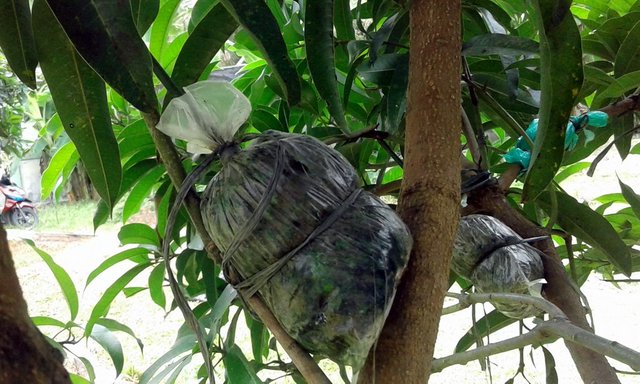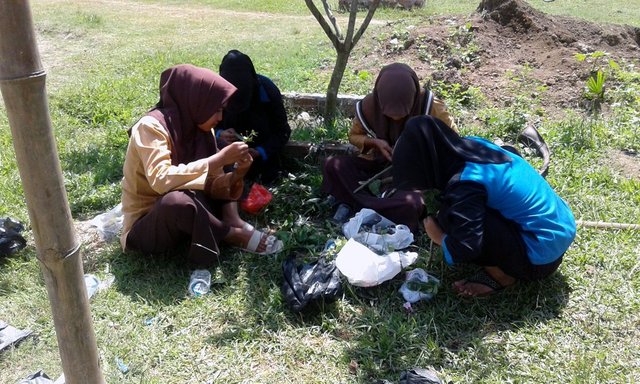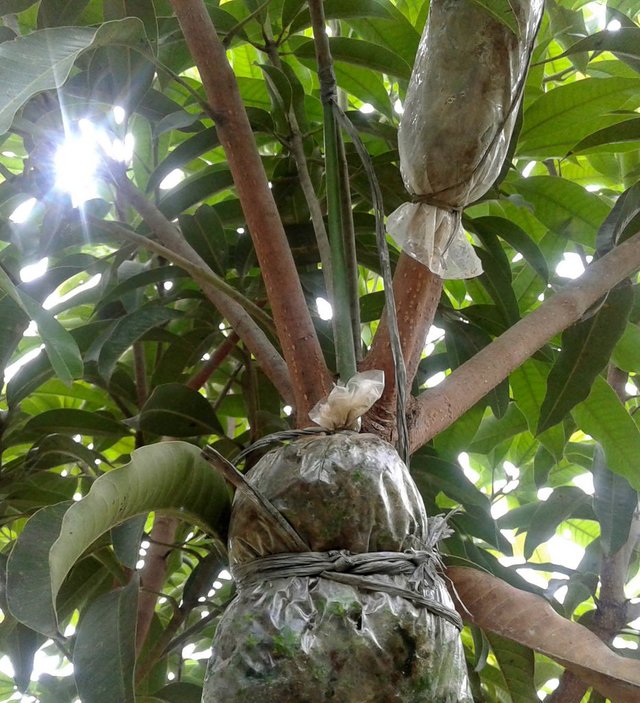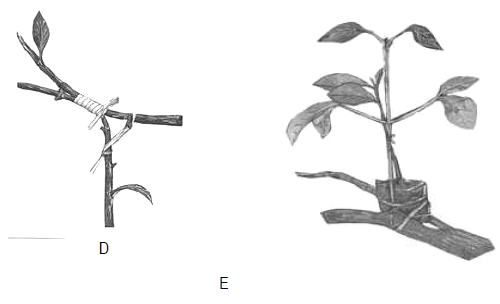In the last post I have discussed about how to Propagating Vegetative Plants with Side Grafting Technique. In this post I will discuss more about Propagating Vegetative Plants with Approach Grafting Technique.
Approach Grafting

Named approach grafting because when grafting, rootstock as being picked up and jabbed by the top of each plant is still associated with rooting. The success rate of approach grafting is very high, but the process is quite difficult because the rootstock must be connected to the branch of the upper stem tree whose base is trunked. Therefore, approach grafting is only recommended for plants that are very difficult or can not be reproduced by grafting or okulasi.

Type Approach Grafting
There are two types of Approach Grafting, namely the sitting and suspension suits.
In a sit-down, the root stem tree is placed in shelf made near the stem's main tree. While on suspension, the root stem tree is hung on a pole fixed near the upper stem tree.
Steps Approach Grafting

Here are the steps to Approach Grafting.
- Incision one side of the rootstock and the top trunk along 2-3 cm with a depth of 1/3 diameter of the stem until the wood tissue is visible. Keep the incision area in the upper stem and the rootstock has the same size and shape to facilitate the connection.
- The shape of the incision is made rounded with a flat, smooth and clean surface so that when it is brought together, the two incisions of the incision are completely unified, no cavities between the two sticks are affixed. Thus the cambium of these two branches can be fused.
- Attach the top and bottom stems, just in the incision area
- Once fused, the field is tied together raffia rope or plastic tape by wrapped from bottom to top, then tied tightly. After that, the seedlings are watered regularly.
Two or three months after being punctured there will be swelling around the tied rod. This indicates the process of grafting is successful and the seeds can be separated from the parent tree. - Cut the seeds on the rootstock, 1 centimeter below the connection plane. Put the seeds under the shade or under the trees to protect from the sun.
Thus explanation of Approach Grafting Technique, we (in Vocational High School Bustanul Yatama, North Aceh) have successfully practiced Approach Grafting Technique on mango honey tree in accordance with the steps that have been described.
if you are interested in trying it, you should really do it according to the steps outlined above. Hopefully useful, good luck to try it


Congratulations! This post has been upvoted from the communal account, @minnowsupport, by qye from the Minnow Support Project. It's a witness project run by aggroed, ausbitbank, teamsteem, theprophet0, someguy123, neoxian, followbtcnews, and netuoso. The goal is to help Steemit grow by supporting Minnows. Please find us at the Peace, Abundance, and Liberty Network (PALnet) Discord Channel. It's a completely public and open space to all members of the Steemit community who voluntarily choose to be there.
If you would like to delegate to the Minnow Support Project you can do so by clicking on the following links: 50SP, 100SP, 250SP, 500SP, 1000SP, 5000SP.
Be sure to leave at least 50SP undelegated on your account.
Downvoting a post can decrease pending rewards and make it less visible. Common reasons:
Submit